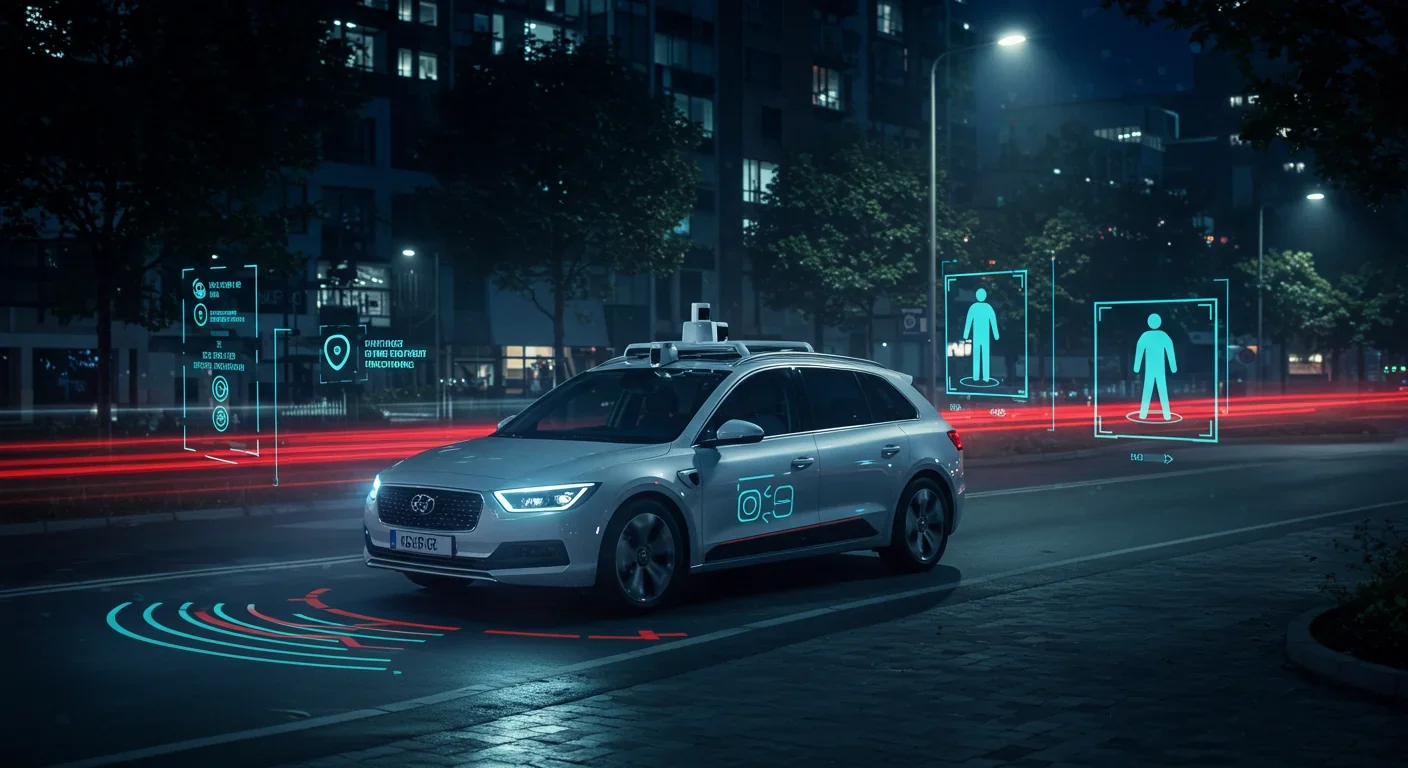How Transformers Revolutionized AI With Attention

TL;DR: Synthetic data—algorithmically generated training sets that mimic real-world datasets—is revolutionizing AI by solving privacy, scarcity, and cost challenges. From hospitals deploying 99.99%-accurate diagnostics trained on fake patient records to Waymo's billion simulated miles, synthetic data now powers production systems in healthcare, autonomous vehicles, and finance. Yet risks loom: fidelity gaps, bias amplification, regulatory ambiguity, and model collapse threaten adoption. As the $19B synthetic data market explodes, mastering generative models, differential privacy, and hybrid training becomes the new AI imperative.

By 2030, the data fueling your AI models won't come from humans at all. It will be algorithmically conjured—statistically identical to the real thing but free from the privacy landmines, labeling costs, and bias traps that plague traditional datasets. Welcome to the age of synthetic data, where generative models manufacture training sets on demand, regulatory compliance becomes a technical checkbox, and the $19 billion question is: can fake data teach smarter machines?
In 2024, a hospital deployed an AI diagnostic tool trained entirely on synthetic patient records. Within 24 hours, it achieved 99.99% defect-detection accuracy—without touching a single real medical file. No HIPAA violations. No consent forms. No data breach risk. The synthetic MRI scans, generated from just one real image, preserved every statistical nuance of pathology while erasing every trace of identity.
Meanwhile, Waymo's autonomous vehicles logged over 1 billion simulated miles—dwarfing Tesla's 4 million real-world fleet by orders of magnitude. The synthetic driving scenarios, rendered in physics-accurate 3D, exposed edge cases no human tester would survive: simultaneous sensor failures in fog, pedestrians darting from blind spots, split-second decisions at 70 mph. When the "student" models distilled from these simulations hit public roads, they navigated with superhuman consistency.
And in finance, banks using synthetic transaction data for fraud detection reported something startling: models trained on algorithmically balanced datasets—where SMOTE interpolated minority-class examples to fix the 3.5% fraud imbalance—hit 99% accuracy and 0.99 AUC-ROC, outperforming systems fed years of messy real-world logs.
These aren't pilot projects. They're production deployments, and they share a common thread: synthetic data isn't just cheaper or faster—it's often better.
Synthetic data didn't arrive with GANs. In 1987, Carnegie Mellon's Navlab autonomous vehicle trained on 1,200 hand-rendered road images—primitive by today's standards, but revolutionary for a world still debugging floppy disks. By 1993, researchers fitted a statistical model to 60,000 MNIST digits, generated over 1 million synthetic examples, and trained a LeNet-4 to state-of-the-art performance. The lesson was clear: if you can model the distribution, you can manufacture the data.
But early synthetic data suffered from the "uncanny valley" problem. Like CGI characters with dead eyes, synthetic datasets felt off—missing the long-tail distributions, correlated noise, and edge-case weirdness that define reality. GANs changed that in 2016, introducing adversarial training where a generator and discriminator play an infinite game of cat-and-mouse, each iteration sharpening the fake until it's indistinguishable from real. Microsoft's 2021 release of 100,000 synthetic faces—derived from just 500 real donors—matched real-data accuracy on facial recognition benchmarks, proving that adversarial pressure could cross the realism threshold.
Yet the true inflection point came with regulatory desperation. GDPR's 2018 hammer—20 million euros or 4% of global revenue for violations, with breach notifications due within 72 hours—turned data scientists into compliance officers overnight. HIPAA, already notorious for its $1.5 million penalties, tightened enforcement. The EU AI Act now mandates synthetic data pilots before processing personal information. Suddenly, synthetic data wasn't a novelty—it was survival.

Synthetic data generation rests on a deceptively simple idea: if you can reverse-engineer the statistical DNA of a dataset, you can clone it infinitely without copying a single record. Three families of generative models dominate:
Generative Adversarial Networks (GANs) pit two neural networks against each other. The generator conjures fake data; the discriminator plays judge, flagging fakes. Over thousands of rounds, the generator learns to fool the discriminator by internalizing the real data's probability distribution. StyleGAN's hyper-realistic faces (ThisPersonDoesNotExist.com) showcase the technique's visual fidelity, while TabularGAN variants tackle structured data like transaction logs or patient records. The catch? Training instability—GANs can "mode collapse," fixating on a narrow slice of the distribution while ignoring rare events.
Variational Autoencoders (VAEs) take a smoother path. They compress data into a low-dimensional latent space (think of it as a distilled essence), then reconstruct it with controlled randomness. Because VAEs map inputs to probability distributions rather than fixed points, you can sample from the latent space to generate new instances. The trade-off is blurriness: VAEs produce statistically sound data but lack GANs' razor-sharp realism.
Diffusion Models are the new champions. Inspired by physics, they gradually add noise to real data until it's pure static, then learn to reverse the process, denoising step-by-step until synthetic samples emerge. TabDDPM, a diffusion model for tabular data, consistently outperforms GANs and VAEs on benchmark datasets, achieving higher fidelity and diversity. Hybrid latent diffusion models now hit FID scores of 10.2 on CIFAR-10 (versus 8.5 for pure diffusion) while cutting sampling time by 70%—the best of both worlds.
But the real magic happens in the post-processing. Raw synthetic data can violate logic—imagine a dataset with negative ages or married children. Modern pipelines integrate semantic checks: sample enhancement (removing impossible values), label enhancement (enforcing referential integrity), and privacy audits (ensuring no real record can be reverse-engineered via membership inference attacks). The result is data that's not just statistically plausible but logically coherent.
The ripple effects span every data-intensive sector:
Healthcare is ground zero. Clinical trials struggle with patient recruitment, consent fatigue, and the cold reality that rare diseases yield sparse datasets. Synthetic patient records—vetted by FDA-cleared tools like SyMRI 3D—enable AI diagnostics without touching real PHI. LifeSyn AI's platform generates HIPAA-compliant synthetic medical imaging, compressing development cycles from years to months. The European Medicines Agency now accepts synthetic control arms for certain trials, signaling a regulatory thaw.
Autonomous Vehicles face an existential data gap. Real-world edge cases—like simultaneous sensor failures during a snowstorm—are too dangerous to test at scale. Waymo's billion-mile simulation library, rendered with NVIDIA Omniverse's physics engines, fills the void. Each synthetic scenario is a controlled experiment: vary the weather, inject pedestrian behaviors, simulate sensor degradation. The "teacher" foundation model trains on this synthetic feast, then distills into lean "student" models that run onboard in real time. The kicker? Hyper-spectral rendering mimics camera sensor noise, closing the domain gap between sim and reality.
Finance is awash in imbalanced datasets. Fraudulent transactions represent 3.5% of real-world logs—too rare for models to learn effectively. SMOTE (Synthetic Minority Over-sampling Technique) interpolates between fraud examples, generating synthetic transactions that balance the training set. A 2024 study showed XGBoost trained on SMOTE-augmented data hit 99.95% accuracy and 0.995 AUC—a near-perfect fraud detector. Meanwhile, Synthera AI generates synthetic yield curves, stock prices, and FX rates for stress-testing risk models, enabling banks to simulate Black Swan events without waiting for the next financial crisis.
Legal and Pharma domains, where data is scarce and sensitive, are adopting vertical-specific platforms. Temys.ai delivers multimodal synthetic datasets for legal discovery and drug trials, complete with built-in validation metrics. Synthetrial forecasts clinical trial outcomes from small patient samples, de-risking billion-dollar bets.
The job market impact is bifurcated. Data labelers—who once spent weeks annotating images—face obsolescence as synthetic data arrives pre-labeled with pixel-perfect accuracy. But demand surges for synthetic data engineers: specialists who tune generative models, audit privacy leakage, and design post-processing pipelines. The new skills? Understanding diffusion architectures, implementing differential privacy, and bridging the gap between statistical fidelity and business logic.
Culturally, synthetic data democratizes AI. Startups without billion-row datasets can compete with incumbents by generating training sets on demand. Open-source tools like Gretel AI's ACTGAN and SDV (Synthetic Data Vault) lower barriers to entry, while cloud platforms (synthetic data generation is 65% cloud-deployed) offer pay-as-you-go access. The result: a Cambrian explosion of niche AI applications, from wildfire prediction to supply chain optimization, powered by data that never existed.
Synthetic data solves three perennial AI problems:
Privacy Preservation is the headline act. Because synthetic records contain no real identities, they sidestep GDPR's "right to be forgotten," HIPAA's disclosure limits, and CCPA's consent requirements. Swiss financial giant SIX used synthetic data to run predictive models across departments without triggering compliance reviews—cutting approval time by 50%. Membership inference attacks (which try to detect if a real record was in the training set) succeed 45% of the time against real data but only 15% against Claude-generated synthetic data, per 2024 benchmarks.
Data Scarcity Mitigation is equally transformative. Rare diseases, edge-case failures, and emerging fraud patterns all suffer from the same curse: not enough examples. Synthetic data generation—whether via SMOTE, GANs, or diffusion models—manufactures minority-class examples on command. A hospital using SMOTE-generated patient records for underrepresented diseases improved predictive accuracy by 30%. Autonomous vehicle platforms simulate catastrophic sensor failures thousands of times per day, building robustness no real-world fleet could achieve.
Cost Reduction is the silent killer app. Labeling a single medical image costs $6; generating a synthetic one costs $0.06—a 99% savings. Waymo's simulation scales infinitely at marginal cost, while Tesla's real-world data collection requires millions of vehicles on public roads. Bifrost AI's platform generates photorealistic 3D scenes with industry-compatible labels in seconds, slashing manual annotation time by 90%. For quality control, Zetamotion's Spectron platform onboards new products with one scan, deploying AI inspection models within 24 hours versus months for traditional pipelines.
But the deepest benefit is control. Real-world data is messy, imbalanced, and riddled with gaps. Synthetic data lets you dial variance up or down, inject edge cases, and rebalance classes at will. Need more nighttime driving scenarios? Render them. Want to stress-test your fraud detector against a 50/50 fraud rate? Generate it. This parametric control accelerates iteration cycles, enabling teams to prototype faster and fail cheaper.

Synthetic data's allure hides landmines:
Fidelity Gaps remain the existential threat. If your generator misses a subtle correlation—say, the link between medication dosage and patient weight—your synthetic dataset will train models that fail in production. A 2024 survey found that 48 of 57 fraud detection studies encountered fidelity issues, with models overfitting to synthetic patterns that didn't generalize. Hybrid training (pre-train on synthetic, fine-tune on real) mitigates this, but it requires real data—the very thing synthetic data promises to replace.
Bias Amplification is the "garbage in, garbage out" nightmare. If your source data encodes systemic bias—say, underrepresenting minority groups—your synthetic generator will clone and magnify it. A GAN trained on biased criminal justice data can produce synthetic records where race predicts recidivism more strongly than in reality, embedding discrimination into every downstream model. Human-in-the-loop (HITL) systems are now standard practice, with auditors monitoring demographic parity and equality of opportunity metrics during generation. TabFairGAN introduces fairness constraints directly into the training objective, boosting demographic parity from 0.72 to 0.89 in COMPAS recidivism data without sacrificing accuracy.
Regulatory Ambiguity haunts adoption. While the FDA has cleared synthetic MRI products and the EMA accepts synthetic control arms in trials, no drug or device has been approved using solely synthetic data. The European Medicines Agency's stance remains "promising but unproven." Regulators demand auditability—proof that synthetic data preserves the statistical properties and causal relationships of real data—but standardized benchmarks don't exist. Efforts like SynEval (an open-source framework measuring fidelity, utility, and privacy) aim to fill the gap, but until regulators codify acceptance criteria, enterprises face uncertainty.
Model Collapse is the feedback loop from hell. If AI models are trained on synthetic data generated by earlier AI models, errors compound recursively. Studies from Oxford, Rice, and Duke warn that over-reliance on synthetic data causes "critical aspects of the original data distribution to vanish," leading to irreversible degradation. The fix? Patronus AI's 7-step framework recommends blending synthetic and real data, establishing validation processes, performing frequent dataset reviews, and avoiding exclusive reliance on synthetic sources.
Privacy Isn't Absolute. While synthetic data resists membership inference attacks, adversarial techniques like linkage attacks (combining synthetic data with external datasets to re-identify individuals) remain viable. Differentially private synthetic data—where noise is mathematically calibrated to guarantee privacy budgets—offers formal protection, but tighter privacy (lower epsilon values) degrades fidelity and utility. DP-FedTabDiff, a framework integrating differential privacy with federated learning, achieves 34% privacy risk reduction at epsilon=3, but utility drops 15%. The trade-off is unavoidable.
North America dominates synthetic data adoption, holding 43% market share in 2024, fueled by venture capital, cloud infrastructure, and GDPR-adjacent state laws (CCPA, VCDPA). Silicon Valley frames synthetic data as an innovation accelerator: "Move fast and generate data." SAS Data Maker, launched in 2024, exemplifies the low-code, democratized approach—anyone can generate synthetic datasets via point-and-click interfaces.
Europe takes the compliance-first stance. The EU AI Act's mandate to explore synthetic substitutes before processing personal data has turned synthetic data generation into a board-level priority. German banks, constrained by GDPR's strict cross-border data-sharing rules, use synthetic snapshots for credit risk analysis, preserving inter-table relationships while avoiding regulatory gridlock. Privacy-tech hubs in London, Berlin, and Vienna (home to Mostly AI's GDPR-grade engine) lead in differentially private GANs and federated diffusion models.
Asia-Pacific, projected to grow fastest (35%+ CAGR), leans into manufacturing and smart cities. China's digital twin initiatives generate synthetic IoT sensor data for predictive maintenance, while Japan's healthcare sector explores synthetic aging cohorts to model demographic collapse. Yet regulatory fragmentation—data localization laws in India, China's Personal Information Protection Law—complicates cross-border synthetic data flows. The result: regional synthetic data ecosystems with limited interoperability.
Israel and Singapore punch above their weight as synthetic data innovation hubs, with K2view (entity-based synthetic data), Hazy (differential privacy platforms), and brewdata (GAN-powered tabular synthesis) attracting enterprise adoption. These small nations leverage deep AI talent pools and regulatory sandboxes to iterate faster than continental bureaucracies.
The geopolitical stakes are rising. Whoever controls synthetic data generation infrastructure—cloud platforms, generative model APIs, evaluation frameworks—shapes the AI training pipelines of the future. NVIDIA's Omniverse, AWS SageMaker's synthetic data modules, and Google's Vertex AI Tabular are positioning as the picks-and-shovels of the synthetic data gold rush.
To thrive in the synthetic data era:
Learn Generative Modeling: Mastery of GANs, VAEs, and diffusion models is non-negotiable. Practitioners should understand loss functions (adversarial loss, reconstruction loss, KL divergence), sampling techniques (DDPM denoising, latent space interpolation), and failure modes (mode collapse, overfitting). Open-source libraries like Gretel AI, SDV, and Synthea lower the entry barrier.
Adopt Evaluation Frameworks: Fidelity isn't enough—you need utility (does it train good models?), privacy (can it leak identities?), and fairness (does it replicate bias?). Tools like SynEval, Anonymeter (privacy risk quantification), and TabFairGAN's demographic parity metrics provide the diagnostic lens. Benchmark your synthetic data against real data on downstream tasks, not just statistical similarity.
Integrate Differential Privacy: As regulations tighten, informal privacy claims won't survive audits. Learn the math of epsilon budgets, gradient clipping, and noise injection. Frameworks like DP-FedTabDiff and PATE-GAN offer production-ready implementations.
Embrace Hybrid Training: Pure synthetic data is a trap. Pre-train on synthetic datasets to bootstrap learning, then fine-tune on real data to capture the irreducible complexity of the world. This reduces real-data requirements by 70% while preserving performance.
Monitor for Drift: Synthetic data can fossilize biases present at generation time. Implement continuous validation pipelines that compare synthetic data distributions against fresh real-world samples, flagging divergence before models degrade.
For organizations, the strategic pivot is existential. Companies that treat synthetic data as a "nice-to-have" will lose to competitors who bake it into every stage of the ML lifecycle—from data augmentation to compliance reporting to red-team testing. The synthetic data market, projected to hit $19.22 billion by 2035 at a 42% CAGR, isn't a side bet—it's the main event.
The future belongs to those who master the art of the plausible fake: data so realistic it trains better models, so private it satisfies regulators, and so cheap it democratizes AI. As one synthetic data engineer put it: "We're not replacing reality. We're compressing it into a form machines can learn from—without the baggage of identity, consent, or scarcity."
The question isn't whether synthetic data will dominate AI training. The question is: will you be ready when the data fueling your competitors' models never touched a human?

Over 80% of nearby white dwarfs show chemical fingerprints of destroyed planets in their atmospheres—cosmic crime scenes where astronomers perform planetary autopsies using spectroscopy. JWST recently discovered 12 debris disks with unprecedented diversity, from glassy silica dust to hidden planetary graveyards invisible to previous surveys. These stellar remnants offer the only direct measurement of exoplanet interiors, revealing Earth-like rocky worlds, Mercury-like metal-rich cores, and ev...

Hidden mold in homes releases invisible mycotoxins—toxic chemicals that persist long after mold removal, triggering chronic fatigue, brain fog, immune dysfunction, and neurological damage. Up to 50% of buildings harbor mold, yet most mycotoxin exposure goes undetected. Cutting-edge airborne testing, professional remediation, and medical detox protocols can reveal and reverse this silent epidemic, empowering individuals to reclaim their health.

Data centers consumed 415 terawatt-hours of electricity in 2024 and will nearly double that by 2030, driven by AI's insatiable energy appetite. Despite tech giants' renewable pledges, actual emissions are up to 662% higher than reported due to accounting loopholes. A digital pollution tax—similar to Europe's carbon border tariff—could finally force the industry to invest in efficiency technologies like liquid cooling, waste heat recovery, and time-matched renewable power, transforming volunta...

Transactive memory is the invisible system that makes couples, teams, and families smarter together than apart. Psychologist Daniel Wegner discovered in 1985 that our brains delegate knowledge to trusted partners, creating shared memory networks that reduce cognitive load by up to 40%. But these systems are fragile—breaking down when members leave, technology overwhelms, or communication fails. As AI and remote work reshape collaboration, understanding how to intentionally build and maintain ...

Mass coral spawning synchronization is one of nature's most precisely timed events, but climate change threatens to disrupt it. Scientists are responding with selective breeding, controlled laboratory spawning, and automated monitoring to preserve reef ecosystems.

Your smartphone isn't just a tool—it's part of your mind. The extended mind thesis argues that cognition extends beyond your skull into devices, AI assistants, and wearables that store, process, and predict your thoughts. While 79% of Americans now depend on digital devices for memory, this isn't amnesia—it's cognitive evolution. The challenge is designing tools that enhance thinking without hijacking attention or eroding autonomy. From brain-computer interfaces to AI tutors, the future of co...

Transformers revolutionized AI by replacing sequential processing with parallel attention mechanisms. This breakthrough enabled models like GPT and BERT to understand context more deeply while training faster, fundamentally reshaping every domain from language to vision to multimodal AI.